1 Introduction
This chapter contains an overview of the available information for HLR alarms and events. The contents include sections on the scope and audience of the documentation, as well as how to receive customer support assistance.
1.1 Overview
This manual provides hardware descriptions for Oracle Communications signaling systems or components based on the EAGLE for releases 45.0 and later. For hardware descriptions of earlier releases, contact your sales representative.
This manual provides an overview of each system and its subsystems including details of standard and optional hardware components. In addition, this manual describes basic site engineering for signaling products.
Systems included in this manual are:
-
EAGLE Signal Transfer Point (STP)
-
Multi-Purpose Server(MPS)
For information on Oracle Communications EAGLE Application Processor Provisioning (EPAP) using the Oracle Communications EAGLE Application B Card (E5-APP-B) Platform, see Application B Card Hardware and Installation Guide.
1.2 Scope and Audience
The scope of this manual includes Oracle Communications EAGLE system information. This manual also contains details on Multi-Purpose Server (MPS), Frames, Modules, and Alarm Panels.
1.3 References
For more information, refer to the following documents:
- Application B Card Hardware and Installation Guide
- Installation Guide
- Database Administration - SS7 User's Guide.
1.4 Regulatory Compliance and Certification
Oracle Communications products are tested to meet the following regulatory standards:
- Network Equipment Building System (NEBS) level 3 as listed in Telcordia SR-3580.
- Applicable Telcordia Electromagnetic Compatibility and Electrical Safety requirements in GR-1089-CORE.
- Applicable Physical Protection requirements in GR-63-CORE.
- Relevant directives and harmonized standards in support
of the products Compliance European (CE) mark required in Europe.
Figure 1-1
shows the mark used to indicate this compliance.
Figure 1-1 European Directives CE Mark
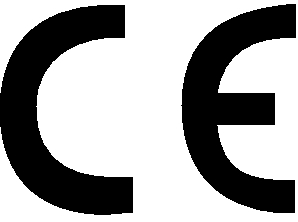
- Relevant standards in ElectroMagnetic Compatibility (EMC) directive 2004/108/EC.
- Relevant standards in Safety directive 2006/95/EC, supported by Certified Body (CB) Test Certificates issued by the National Certification Body as tested to IEC 60950 with national differences for participating countries .
- Underwriters Laboratories (UL) listed under UL File
E200146 for USA and c-UL for Canada.
Figure 1-2
shows the mark used to indicate this compliance.
Figure 1-2 Combined UL Mark for the United States and Canada
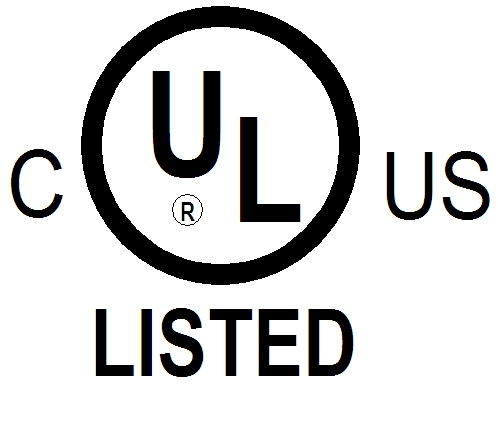
- Relevent standards in SJ/T 11363-2006 for limits of
certain hazardous substances.
Figure 1-3 Hazardous Substances
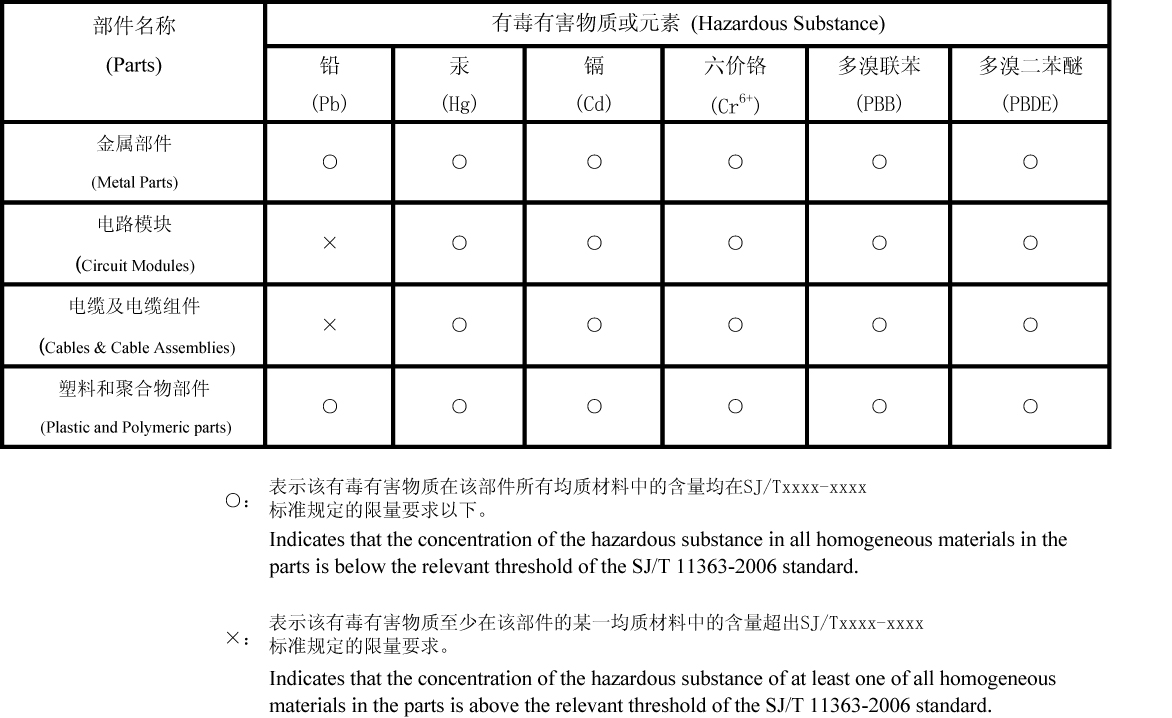
台灣標準文件 CNS 15663
Taiwan Standard CNS 15663
Eagle 通訊機架
Eagle Communication Rack
表格文件號碼 :
Table part number: 7360209
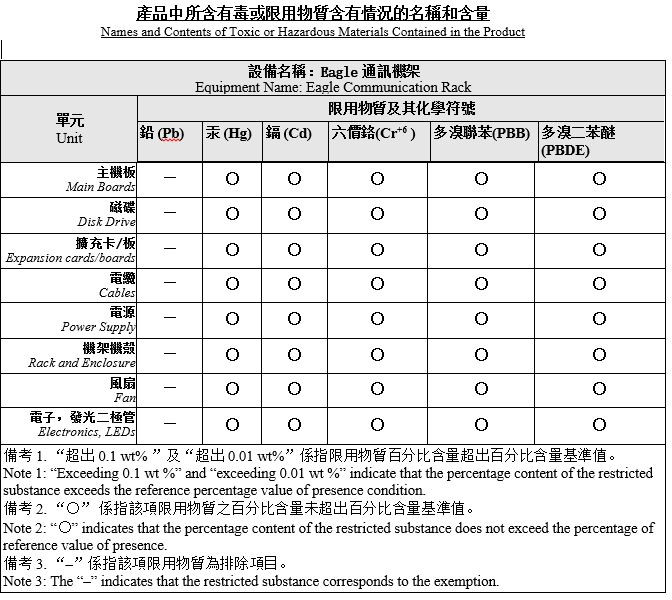
中国标准文件 SJ/T 11364
China Standard SJ/T 11364
Eagle 通讯机架
Eagle Communication Rack
表文件号码 :
Table part number:
7360209
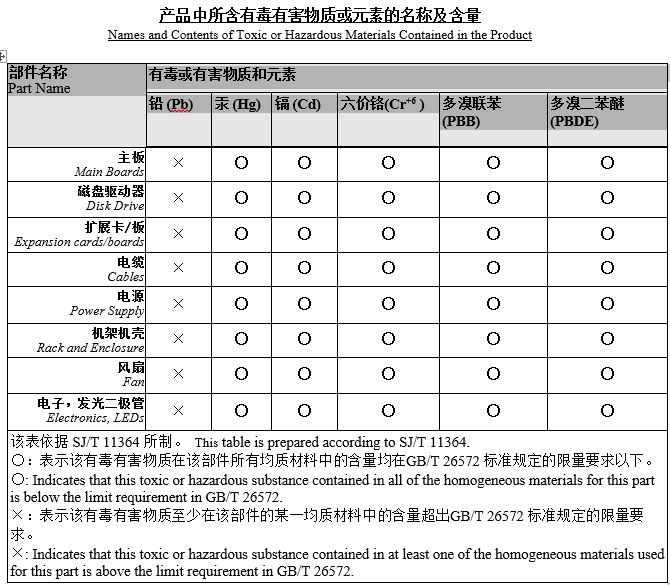
版權所有 2019 年 Oracle 和 / 或其附屬公司。保留所有權利。本文檔中提供的信息僅用於規劃的目的,並且可以從一個或多個以下得出:在 Oracle開發的產品信息 ; 一般行業信息 ; 第三方提供的信息,包括但不限於製 Oracle供應鏈中的製造商和零部件供應商。此外,Oracle可能在任何時間修改產品計劃,管理電子設備的法律,法規和規章也可能因司法管轄區而異。因此,本文件中提供的信息不成為任何形式的代表或保證,也無意以任何方式修改 Oracle 和此文件接收者間的任何協議的條款和條件,或任何由此產生的各方權益。
版权所有 2019 年 Oracle 和 / 或其附属公司。保留所有权利。本文档中提供的信息仅用于规划的目的,并且可以从一个或多个以下得出:在 Oracle开发的产品信息 ; 一般行业信息 ; 第三方提供的信息,包括但不仅限于 Oracle供应链中的制造商和零部件供应商。此外,Oracle可能在任何时间修改产品计划,管理电子设备的法律、法规和规章也可能因司法管辖区而异。因此,本文件中提供的信息不成为任何形式的代表或保证,也无意以任何方式修改 Oracle 和此文件接收者间的任何协议的条款和条件,或任何由此产生的各方权益。
Copyright 2019 Oracle and/or its affiliates. All rights reserved. The information provided in this document is for planning purposes only, and may be derived from one or more of the following: product information developed at Oracle; general industry information; and information furnished by third parties, including but not limited to manufacturers and component suppliers in Oracle's supply chain. In addition, Oracle may modify product plans at any time, and the laws, rules and regulations governing electronic equipment may vary by jurisdiction. As a result, the information provided in this document is not intended to be a representation or warranty of any kind, nor is it intended to modify in any way the terms and conditions of any agreement between Oracle and the recipient of this information, or the rights of either party arising therefrom.
1.5 Hardware Repair and Return
Table 1-1 Basic RMA Types
| Replacement Type | Description | Turnaround |
|---|---|---|
|
Priority Advance Replacement |
Customer requests the URGENT replacement of a damaged product |
Same Day Shipment |
|
Advance Replacement |
Customer request the replacement of a damaged product |
Shipment Within 3 Business Days |
|
Repair / Return |
Customer will return a damaged product for repair |
Shipment Within 5 Days After Receipt |
|
Expendable |
A damaged part, such as a cable, is replaced, but the Customer does not return the damaged product |
Depends on Urgency - Shipment Within 3 Business Days |
Table 1-2 lists the RMA return reasons.
Table 1-2 RMA Reasons for Return
| Reason for Return | Description |
|---|---|
|
Damaged by Environment |
Product damaged by environmental phenomena such as water damage or earthquake |
|
Damaged in Shipment |
Damaged between shipment from Oracle and receipt at the Customer’s installation site. |
|
DOA – Dead on Arrival |
Product is not functional when it is first installed at the Customer’s location. |
|
Lab Return |
Products returned from lab sites. |
|
Product Capture |
Defect to be captured by Quality or Engineering (not Product Recall). |
|
Product Deficiency |
Anything wrong with the part that doesn’t fall into another category. |
|
Product Recall |
Products recalled by divisions for the repair of a defect or replacement of defective products. |
|
Return – No Product Deficiency |
Anything returned without the product being defective. |
1.5.1 Repair and Return Shipping Instructions
All returned equipment, assemblies, or subassemblies must be shipped to the Repair and Return Facility specified by the Technical Services engineer. The item being returned must be shipped in the original carton or in an equivalent container assuring proper static handling procedures and with the freight charges prepaid.
The assigned RMA number must be clearly printed on the “RMA#:” line of the shipping label on the outside of the shipping package. If the RMA number is not placed on the label, the return could be delayed.